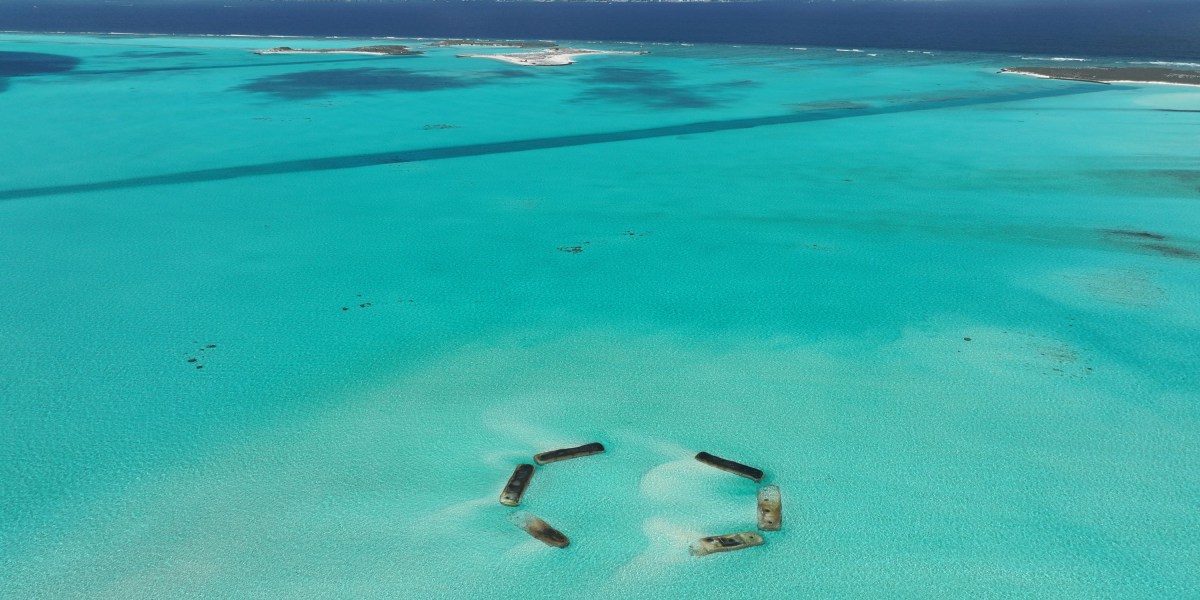Off one atoll, just south of the Maldives’ capital, Malé, researchers are testing one way to capture sand in strategic locations—to grow islands, rebuild beaches, and protect coastal communities from sea-level rise. Swim 10 minutes out into the En’boodhoofinolhu Lagoon and you’ll find the Ramp Ring, an unusual structure made up of six tough-skinned geotextile bladders. These submerged bags, part of a recent effort called the Growing Islands project, form a pair of parentheses separated by 90 meters (around 300 feet).
The bags, each about two meters tall, were deployed in December 2024, and by February, underwater images showed that sand had climbed about a meter and a half up the surface of each one, demonstrating how passive structures can quickly replenish beaches and, in time, build a solid foundation for new land. “There’s just a ton of sand in there. It’s really looking good,” says Skylar Tibbits, an architect and founder of the MIT Self-Assembly Lab, which is developing the project in partnership with the Malé-based climate tech company Invena.
The Self-Assembly Lab designs material technologies that can be programmed to transform or “self-assemble” in the air or underwater, exploiting natural forces like gravity, wind, waves, and sunlight. Its creations include sheets of wood fiber that form into three-dimensional structures when splashed with water, which the researchers hope could be used for tool-free flat-pack furniture.
Growing Islands is their largest-scale undertaking yet. Since 2017, the project has deployed 10 experiments in the Maldives, testing different materials, locations, and strategies, including inflatable structures and mesh nets. The Ramp Ring is many times larger than previous deployments and aims to overcome their biggest limitation.
In the Maldives, the direction of the currents changes with the seasons. Past experiments have been able to capture only one seasonal flow, meaning they lie dormant for months of the year. By contrast, the Ramp Ring is “omnidirectional,” capturing sand year-round. “It’s basically a big ring, a big loop, and no matter which monsoon season and which wave direction, it accumulates sand in the same area,” Tibbits says.




